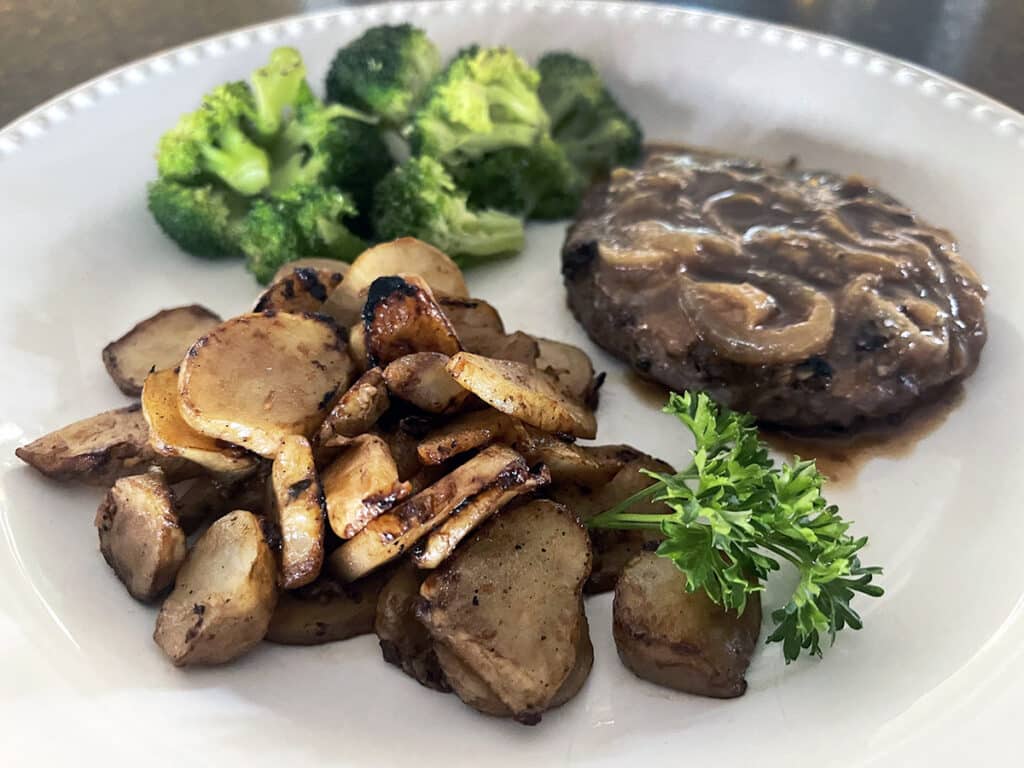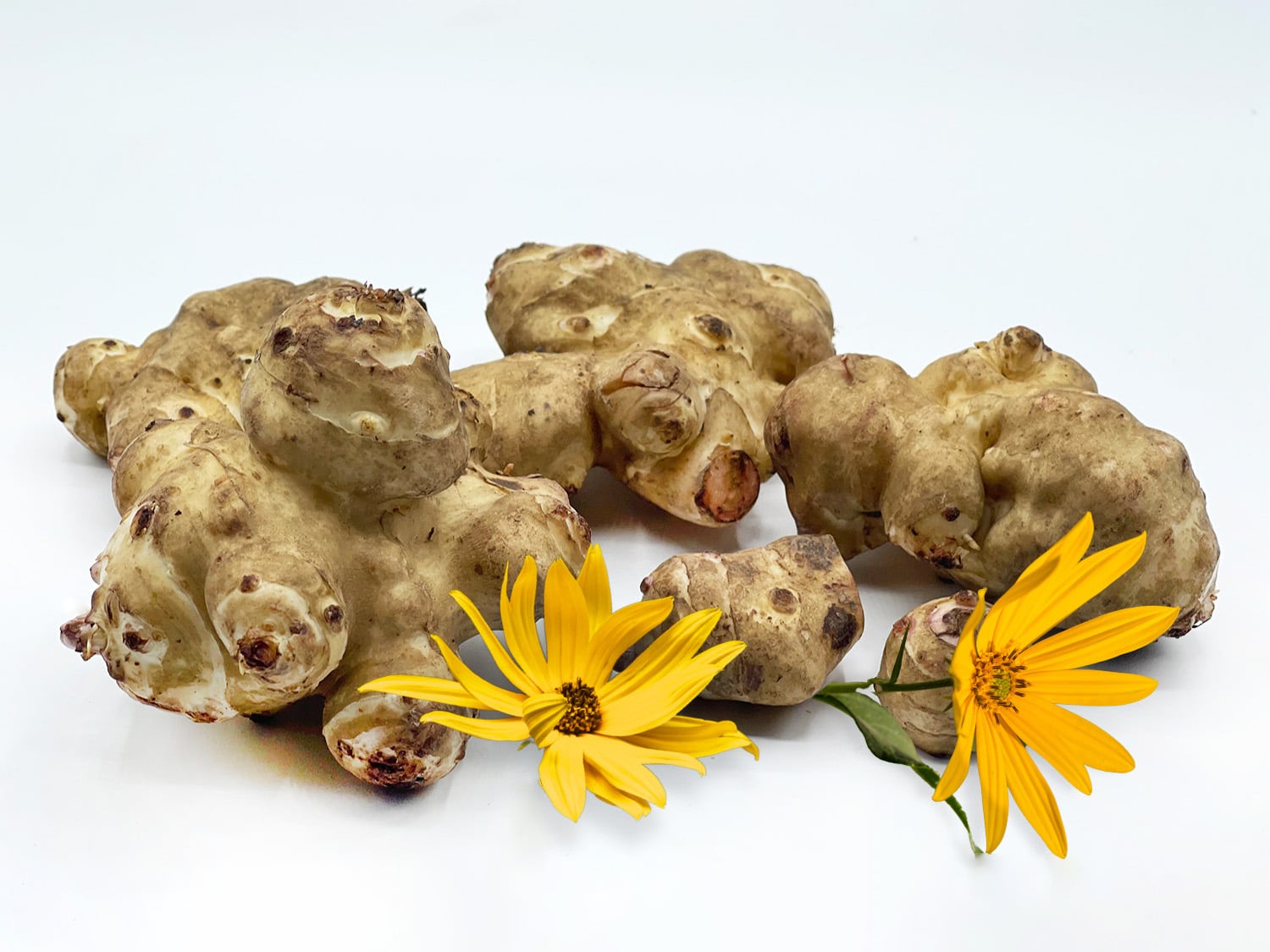Sunchokes, also known as Jerusalem artichokes, are tall, sunflower-like plants that can reach heights of 5 to 10 feet and produce an abundance of happy yellow flowers in the late summer when many other flowers are already giving up the ghost.
They also make a great addition to a sustainable veggie garden. Sunchokes are a perennial crop (woot!) which means that they will come back year after year. They can tolerate a range of soil types and are drought-tolerant. They’re less prone to pests and diseases than other crops, and can be used as a natural soil builder. Once established, sunchokes require minimal maintenance, producing a large crop of edible tubers with very little effort.
Now that’s my kind of gardening!
Of course, the thing that makes them so great can also be their biggest challenge. Sunchokes are prolific to the point of being invasive if not managed properly. They propagate from underground tubers, which can multiply rapidly to form dense colonies that may outcompete native plants. If you are planning to grow a sunchoke patch, it’s best to plant them in a place you don’t mind them taking over. Or plant them in a container or raised bed with root barriers that extend below the soil surface to restrict rhizome spread and prevent them from wandering too far.
I’m in the process of persuading a Jerusalem artichoke patch to take up residence on a hill above our house, so the plants will have plenty of room to spread. I look forward to seeing a carpet of sunny yellow flowers on the hillside! ♥
Lost in translation
Despite the name “Jerusalem artichoke,” sunchokes (Helianthus tuberosus) are not related to artichokes, and they have no historical or cultural connection to the city of Jerusalem. The plant is actually native to North America and was cultivated as a food crop by Native Americans before European settlers arrived.
European explorers encountered Jerusalem artichokes during expeditions to the New World. The name is believed to have originated in the 17th century, when French explorer Samuel de Champlain introduced them to Europe. At the time, the word “artichoke” was used to describe any edible plant that had a heart-shaped leaf or flower, and was derived from the Italian word articiocco.
The “Jerusalem” part of the name is thought to be a corruption of the Italian word “girasole,” which means “sunflower,” since sunchokes are members of the sunflower family, Asteraceae.
During World War II, Jerusalem artichokes (“topinambours”) gained prominence as a “war vegetable” in France, thanks to their resilience, high nutritional value and ability to grow in adverse conditions. Topinambours provided an alternative source of carbohydrates, vitamins and minerals during times of rationing and food shortages.
Boil em, mash em, stick em in a stew
In recent years, the Jerusalem artichokes have experienced a resurgence in popularity. Sunchokes are crunchy, nutty and mildly sweet and take on the flavor of whatever you cook them with. To me, they resemble a cross between a potato and a water chestnut, so we use pretty much any way we would normally use water chestnuts or potatoes.
- Slice them thinly and toss them raw into Asian lettuce wraps or slice or grate them into green salads for a water chestnut-like crunch.
- Sunchokes can be cooked and mashed, similar to potatoes. They can be boiled, steamed or roasted before being mashed with herbs and garlic. Try adding a few sunchokes the next time you make a pot of mashed potatoes. Your family probably won’t notice, and you’ll increase the soluble fiber content considerably!
- Topinambour gratin is a popular French dish made with thinly sliced sunchokes layered with cheese, cream and sometimes other vegetables. The dish is baked until golden and the flavors meld together, resulting in a rich and savory gratin.
- Pickled sunchokes make a tangy addition to charcuterie boards, salads and sandwiches. Bonus, they don’t lose their crunch like cucumber pickles and tend to retain much of their crispness through the pickling process.
- Sunchokes can also be roasted, grilled or sautéed. Caramelized sunchokes become slightly crispy on the outside while remaining tender on the inside.
Delicious!
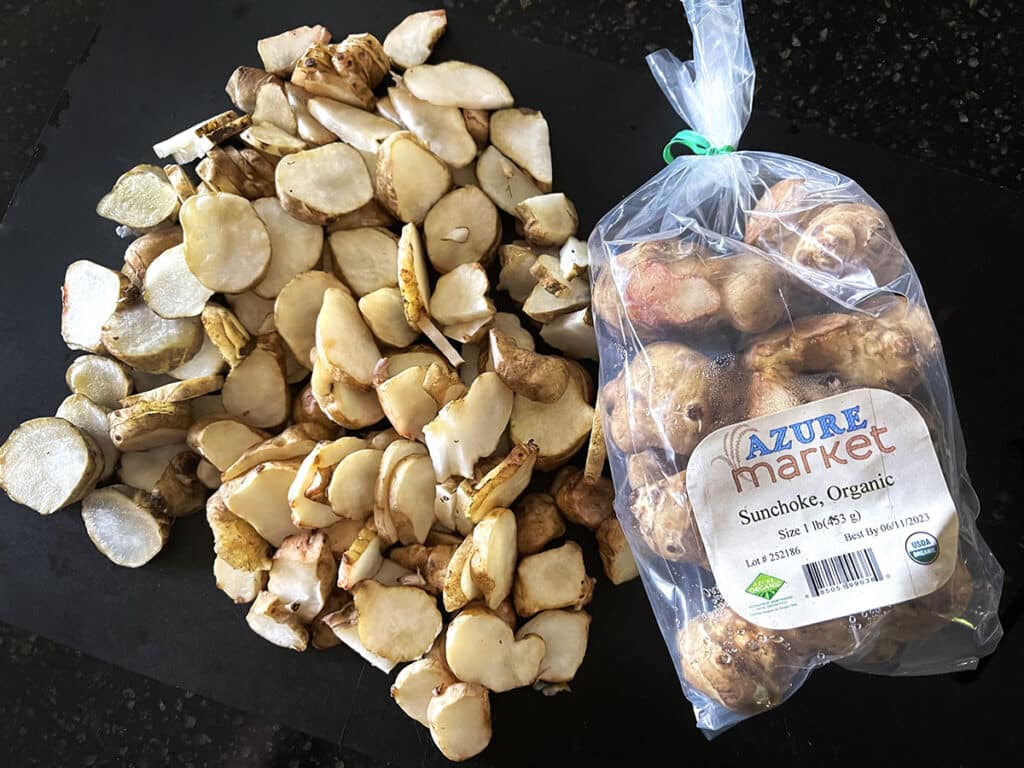
Medicinal value & resistant starch
Jerusalem artichokes are a good source of vitamins and minerals such as vitamins C, E, B, potassium, iron and various phenolic compounds that exhibit antioxidant properties. Some studies suggest that extracts from Jerusalem artichoke also possess anti-inflammatory properties thanks to the presence of various bioactive compounds such as phenolic acids and flavonoids.
Sunchokes are a rich source of a type of soluble fiber called inulin, which acts as a prebiotic to promote the growth of healthy gut bacteria. This type of resistant starch is not broken down by human digestive enzymes. Instead, inulin “resists” digestion in the small intestine and reaches the large intestine largely intact, where it is fermented by bacteria in the gut, serving as a valuable fuel source for beneficial gut bacteria.
This fermentation process produces short-chain fatty acids (SCFAs) such as acetate, propionate, and butyrate, which are beneficial for gut health. SCFAs are the main energy source for cells in the colon and have been shown to reduce inflammation, improve digestion and insulin sensitivity and even lower the risk of colon cancer.
Resistant starch has been associated with a reduced risk of chronic diseases, including type 2 diabetes and cardiovascular disease. It may also help lower cholesterol levels and improve insulin sensitivity. Because inulin is not digested in the same way as regular carbohydrates, it has a lower glycemic index and does not cause a rapid spike in blood sugar levels. This makes sunchokes a good food choice for people with diabetes or those who want to maintain stable blood sugar levels.
The amount of resistant starch in the tuber is dependent on when it was harvested. The best time to harvest sunchokes for maximum inulin content is in the late autumn, after the first frost. The cold temperatures stimulate the conversion of the sunchoke’s starches into inulin, leading to higher levels of resistant starch in the tuber.
When the plant is exposed to frost, the tubers begin accumulating sugars as a natural defense mechanism against the freezing temperatures. These sugars are then converted into inulin, which acts as a cryoprotectant within the plant cells and helps to lower the freezing point of the cell sap within the plant tissues. This protection against ice crystal formation minimizes cellular damage and prevents the plant from freezing.
Isn’t nature cool? ♥
* Important! If you’re not accustomed to eating prebiotic-rich foods, inulin can cause digestive upset, bloating and gas. It’s always a good idea to introduce new foods slowly and in small amounts to see how your body reacts.
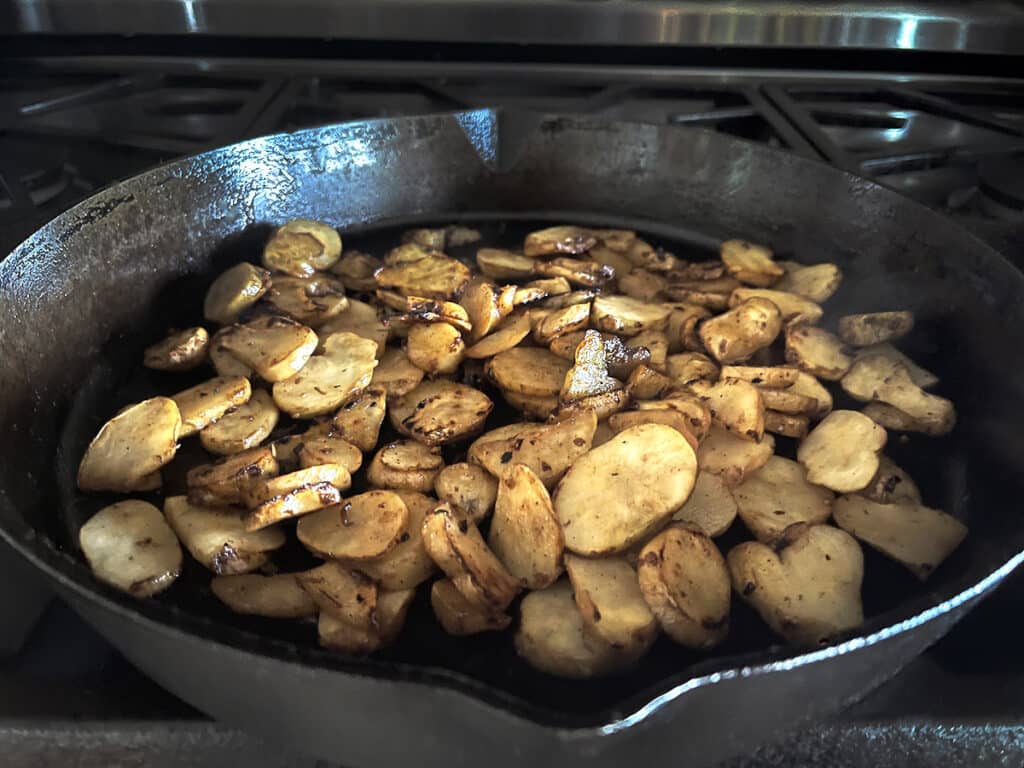
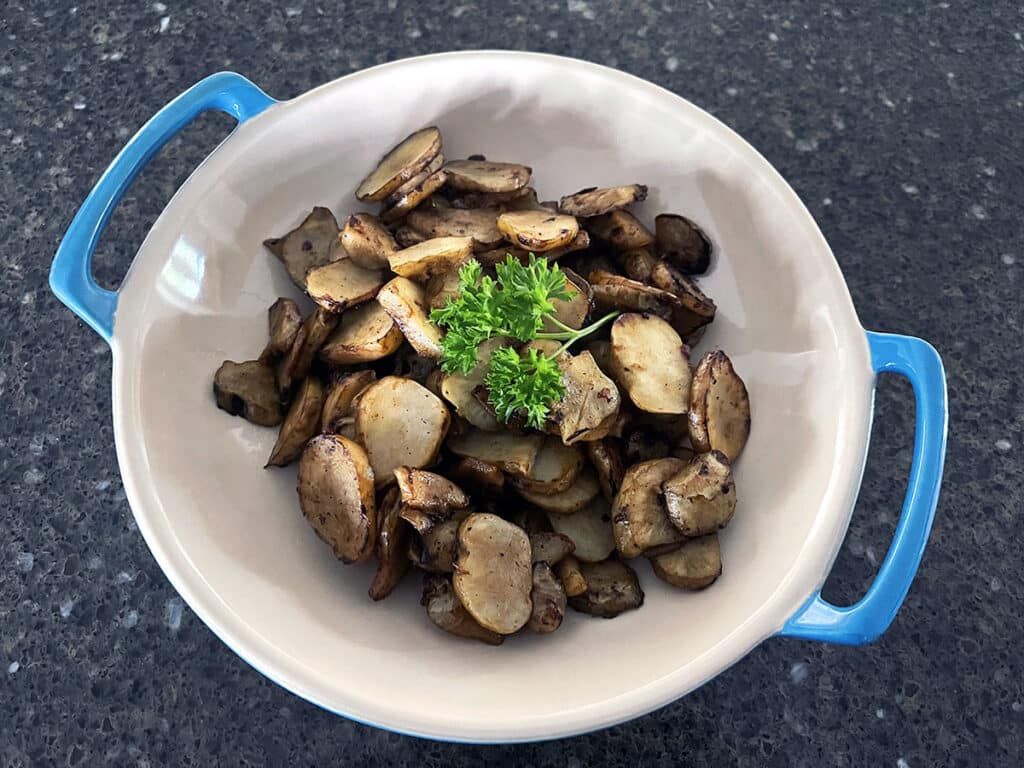
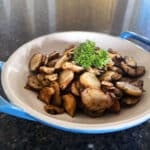
Garlicky Sunchokes with Lemon Butter
5 Stars 4 Stars 3 Stars 2 Stars 1 Star
No reviews
Ingredients
1 lb sunchokes
2–3 T butter
salt and pepper to taste
3 cloves garlic, minced
1 lemon, juiced (2–3 T)
2 T fresh parsley, chopped
Instructions
- Clean sunchokes with a vegetable brush and cut into 1/4″ thick slices
- In a large skillet, heat the butter over medium-high heat.
- Add the sunchokes to the skillet in a single layer, taking care not to overcrowd the pan.
- Season the sunchokes with salt and pepper to taste.
- Cook, stirring occasionally, until the sunchokes are golden brown and crispy.
- Add the minced garlic to the pan and cook for an additional minute, stirring frequently.
- Remove the pan from the heat and add the lemon juice, tossing to coat evenly.
- Toss with fresh parsley to serve.
